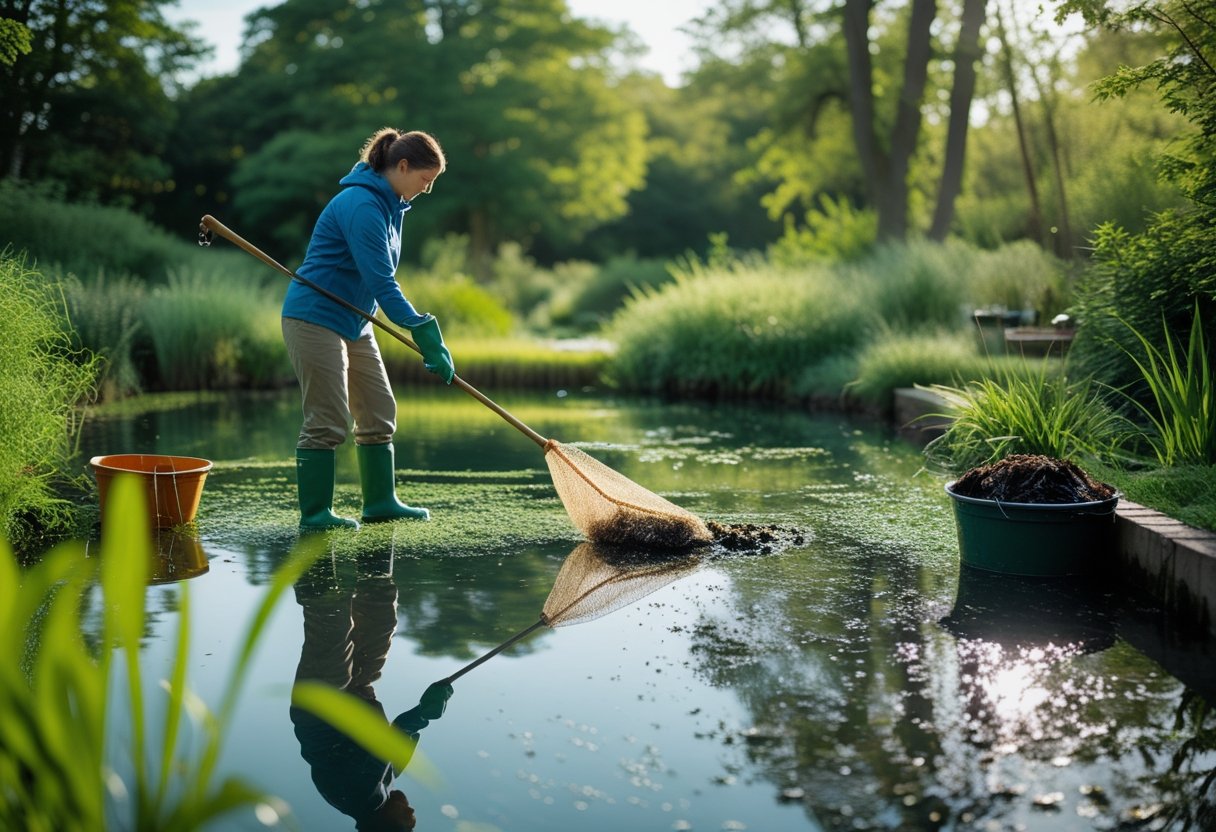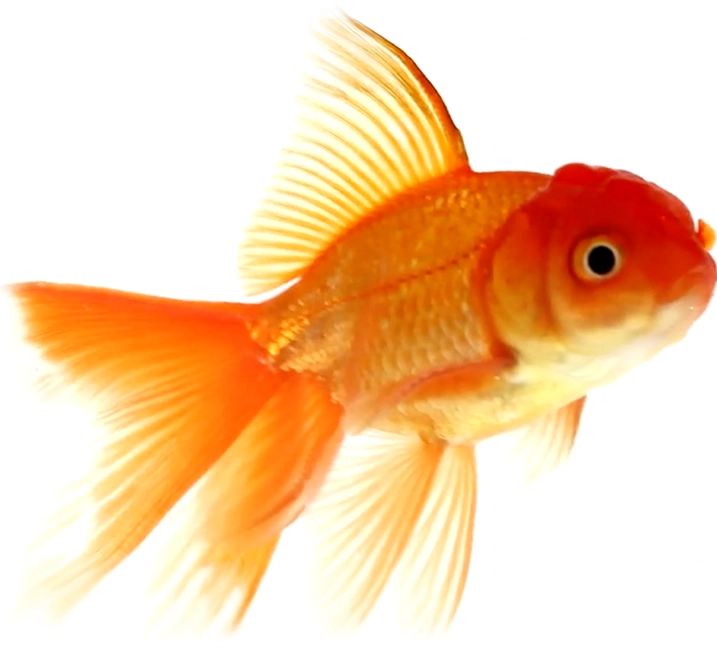How to Clean a Stagnant Pond? Effective Steps for Clearer Water



Common Pond Cleaning Mistakes and How to Avoid Them
Maintaining the health of your pond and ensuring high water quality are essential for fostering a vibrant and balanced aquatic environment. Regular cleaning plays a pivotal role in sustaining this balance, directly influencing the well-being of aquatic life and the clarity of the water.
A well-maintained pond supports a thriving ecosystem, providing habitat and sustenance for various forms of pond wildlife. Regular cleaning and maintenance are crucial in preventing common issues such as algae overgrowth, oxygen depletion, and the accumulation of harmful bacteria. By incorporating consistent cleaning practices, you not only enhance the aesthetic appeal of your pond but also promote a healthier environment for all its inhabitants.
Pond Health and Water Quality
A pond's health is a reflection of its water quality, which is influenced by various factors:
- Clarity: Clear water allows sunlight penetration, supporting photosynthesis in aquatic plants.
- Dissolved Oxygen Levels: Essential for the survival of fish and beneficial microorganisms. Adequate oxygen levels promote a balanced ecosystem.
- Algae Growth: While some algae are natural, excessive growth can lead to eutrophication, depleting oxygen and harming aquatic life.
Regular pond cleaning plays a pivotal role in maintaining these aspects, ensuring a vibrant and healthy pond.
Why Regular Pond Cleaning is Essential
Regular pond cleaning is crucial for maintaining a balanced and healthy aquatic environment. Key reasons include:
Dealing with Organic Waste
Over time, organic matter such as leaves, twigs, and fish waste accumulate at the pond's bottom, forming sludge. This buildup can lead to poor water circulation and oxygen depletion, stressing aquatic life. Regular removal of this waste prevents these issues, promoting a healthier pond ecosystem.
Preventing Excess Nutrient Build-Up
Decomposing organic material releases nutrients like nitrates and phosphates into the water. Excessive nutrients fuel algae blooms, which can cloud the water and deplete oxygen levels, harming fish and other aquatic organisms. Regular cleaning helps prevent nutrient overload, maintaining a balanced ecosystem.
Avoiding Stagnant Water
Accumulated debris and waste can cause water stagnation, reducing oxygen levels and encouraging harmful bacteria growth. Stagnant water is detrimental to aquatic life and can lead to unpleasant odours. Regular cleaning and maintenance ensure proper water circulation and oxygenation, supporting a vibrant pond environment.
Maintaining a Balanced Ecosystem
Consistent removal of organic debris supports the health of fish, plants, and beneficial bacteria. This practice helps prevent algae overgrowth, maintains clear water, and supports the overall health of the pond's ecosystem. A balanced ecosystem is essential for the survival of all pond inhabitants.
Best Practices for Pond Cleaning: How to Keep Your Pond Healthy and Thriving
Maintaining a clean pond is crucial for ensuring the health of your pond ecosystem and the overall well-being of the plants and animals that call it home. Regular pond cleaning plays a vital role in maintaining water quality, preventing algae blooms, and ensuring the pond water remains clear and healthy. This article will outline the best practices for pond cleaning, including steps you can take yourself and when it may be necessary to call in professionals.
Comprehensive Cleaning Steps
Debris Removal: The First Step to Clean Water
One of the most essential steps in pond cleaning is the removal of debris such as fallen leaves, twigs, and branches. Over time, organic material accumulates in the pond, breaking down into sludge at the bottom. This not only impacts the aesthetic appeal of your pond but also disrupts the pond ecosystem. As the organic material decomposes, it can create excess nutrients that fuel algae growth and reduce the oxygen levels in the water.
To prevent this build-up, it's recommended to regularly skim the surface of the pond and remove any large debris. This helps maintain a clean surface and ensures that the pond water remains clear. Consider using a pond skimmer or net for easier debris removal.
Filtration and Skimming: Essential Tools for Water Clarity
Pond filters and skimmers are two critical pieces of equipment for maintaining the health of your pond. A good filtration system works to remove smaller particles and debris that cannot be manually skimmed from the water surface. Filters typically work by pulling water through a mesh or sponge, trapping dirt and debris, and returning the clean water back into the pond.
In addition to filtration, skimmers are useful for catching floating debris before it settles to the bottom of the pond. Skimmers can be integrated with your 264 system or used separately. Regular cleaning of the skimmer and filter ensures they remain effective in maintaining water quality.
Water Changes: A Simple Yet Effective Maintenance Strategy
Changing a portion of your pond water (usually about 10-20%) every few weeks is one of the most effective ways to maintain pond water quality. Over time, water quality naturally degrades due to the build-up of waste, excess nutrients, and contaminants. Replacing part of the water helps dilute these substances, keeping your pond fresh and preventing water stagnation.
When performing water changes, make sure to use a dechlorinator if you're using tap water. Chlorine can harm the fish and other pond wildlife. Additionally, always add the new water slowly to prevent shocking your pond’s ecosystem.
Cleaning Equipment: Tools to Get the Job Done
Effective pond cleaning requires the right tools. Some essential equipment includes:
- Pond Vacuum: A pond vacuum is great for removing sludge and debris from the bottom of the pond. It helps to clean areas that are hard to reach manually.
- Brushes and Scrapers: These are useful for cleaning algae off rocks, walls, and pond filters. A long-handled brush can make cleaning much easier.
- Pond Netting: A fine mesh net helps to catch floating debris and leaves, keeping the water clear and preventing organic matter from decomposing in the water.
- Water Testing Kit: Regular testing of pond water ensures that the pH, ammonia, and nitrate levels are within the safe range for your pond wildlife.
Seasonal Adjustments: Tailoring Your Cleaning Routine
Cleaning needs will vary depending on the season. In the fall, when leaves are falling, cleaning becomes more frequent as they can accumulate quickly and cause blockages. It's essential to remove these leaves before they decompose and add excessive nutrients to the water, which could disrupt your pond's ecosystem.
During winter, cleaning can be reduced since the pond is likely to freeze over. However, it's essential to clear debris before the water freezes, as debris can block oxygen exchange, impacting fish and plant life.
Professional Help vs. DIY: When to Call in Experts
While regular pond cleaning can be managed on your own, some ponds may require professional help for deep cleaning, especially if they are large or heavily neglected. If your pond has been neglected for a long time and has excessive algae or sludge build-up, it may be time to call in a professional pond cleaning service. They can also help with more complex issues, such as repairing pond liners or troubleshooting filtration systems.
Long-term Benefits of Regular Cleaning for Water Quality
Now that we’ve covered the best practices for cleaning your pond, let’s discuss the long-term benefits of regular maintenance and how it contributes to a healthier pond ecosystem overall.
Sustaining Clear Water
Regular cleaning is essential for keeping your pond water clear and allowing sunlight to reach submerged plants. Sunlight is necessary for photosynthesis, which helps plants grow and maintain a healthy balance in the pond ecosystem. Clean water also enhances visibility, making your pond a beautiful feature in your garden. Maintaining water clarity is not only visually appealing but also supports a healthier environment for fish and other pond wildlife.
Reducing Algae Blooms
Algae blooms can be one of the most frustrating problems for pond owners. When organic material, like decomposing leaves, builds up in the pond, it creates excess nutrients that feed algae. Algae can quickly take over the pond, blocking sunlight and depleting oxygen levels, which can be detrimental to your pond’s ecosystem. By regularly cleaning your pond and removing organic material, you can prevent these blooms and maintain a balanced pond water quality.
Enhancing Oxygen Levels
A clean pond promotes better oxygen circulation throughout the water, which is essential for supporting aquatic life, especially fish. Algae blooms and organic decay can deplete oxygen levels, leaving fish and other pond wildlife struggling to survive. Regular cleaning helps to prevent these issues, ensuring that the pond water remains well-oxygenated and conducive to a thriving pond ecosystem.
Prevention of Diseases
Dirty water can lead to an increase in bacteria and pathogens, which can harm your fish and plants. Regular cleaning helps reduce the risk of disease outbreaks by eliminating waste and organic matter that can harbor harmful microorganisms. By maintaining clean water and a healthy pond ecosystem, you can prevent diseases that could affect your pond wildlife.
Pond Aesthetics
A well-maintained pond can be a focal point of your garden or outdoor space. Regular cleaning preserves the beauty of your pond, keeping the water clear, the plants healthy, and the fish active. A clean pond not only looks beautiful but also provides a peaceful and serene environment for you to enjoy.
Conclusion
Regular pond cleaning and maintenance are essential for preserving your pond's health, ensuring clear water, and supporting a thriving pond ecosystem. By removing debris, cleaning the water, and using proper filtration systems, you can prevent issues like algae blooms, oxygen depletion, and diseases, all while enhancing the beauty of your pond.
If you're looking for professional assistance in maintaining or cleaning your pond, Aqua Pond Ltd. offers over 30 years of experience in pond care. Specialising in pond cleaning, maintenance, repair, and construction, Aqua Pond Ltd. provides top-quality services, including custom water features like waterfalls and fountains. They use Evolution Aqua Pond products to ensure your pond stays in excellent condition.
For more information or to schedule a consultation, contact Aqua Pond Ltd. today. Call 01525 552150 or email [email protected] to learn more about their services. Alternatively, visit their website and use the contact form for any inquiries.
Keep your pond healthy and beautiful with Aqua Pond Ltd. – your trusted partner in pond care.

Frequently Asked Questions
MY POND IS OVERGROWN.
MY POND IS LEAKING – WHAT CAN I DO?
WHY IS MY POND WATER GREEN?
Do I need to have my pumps running all the time?
Why Choose Us
Experience With years of experience in pond maintenance and cleaning, our team has the expertise to handle ponds of all sizes and complexities. We are dedicated to delivering high-quality services tailored to meet the unique needs of each customer.
Professionalism Our team consists of trained professionals who are passionate about pond care. We take pride in our work and strive to exceed our customers’ expectations with every service we provide.
Customized Solutions We understand that every pond is different, and we tailor our services to suit the specific requirements of each customer. Whether you have a small backyard pond or a larger water feature, we have the knowledge and resources to keep it in pristine condition.
Environmentally Friendly Practices We are committed to using eco-friendly products and methods in our pond cleaning services. Our goal is to promote sustainability and preserve the natural balance of your pond ecosystem.
Customer Satisfaction Your satisfaction is our top priority. We work closely with our customers to ensure that their pond maintenance needs are met with professionalism and care. We take the time to listen to your concerns and provide personalized recommendations to help you achieve the pond of your dreams.
Ready to schedule a pond cleaning service with us?
Contact Aqua Pond today to learn more about our services and to book an appointment.
Let us help you create a clean, healthy, and vibrant pond that you can enjoy for years. Thank you for considering Aqua Pond for your pond maintenance needs.
What our Customers Say...
